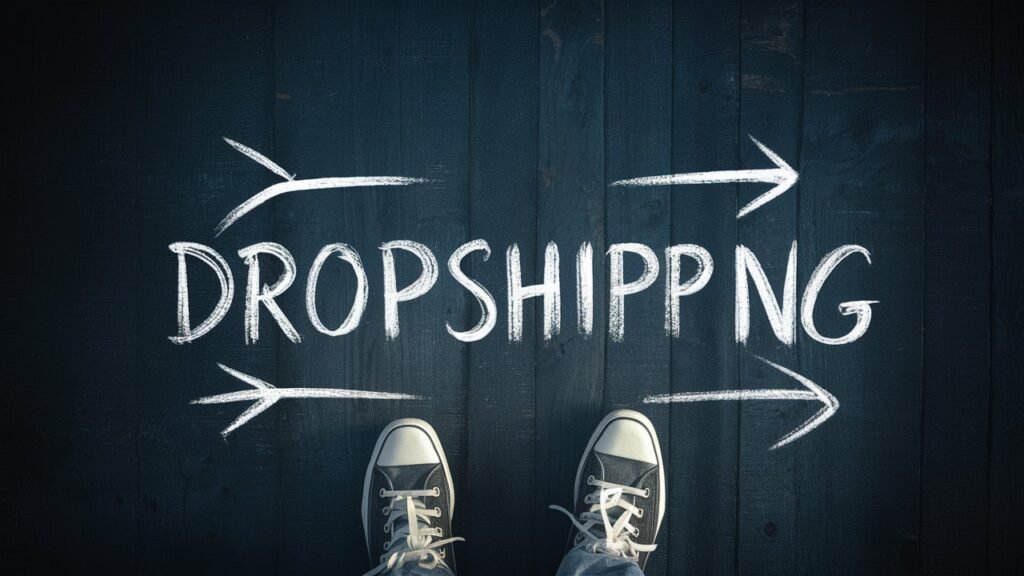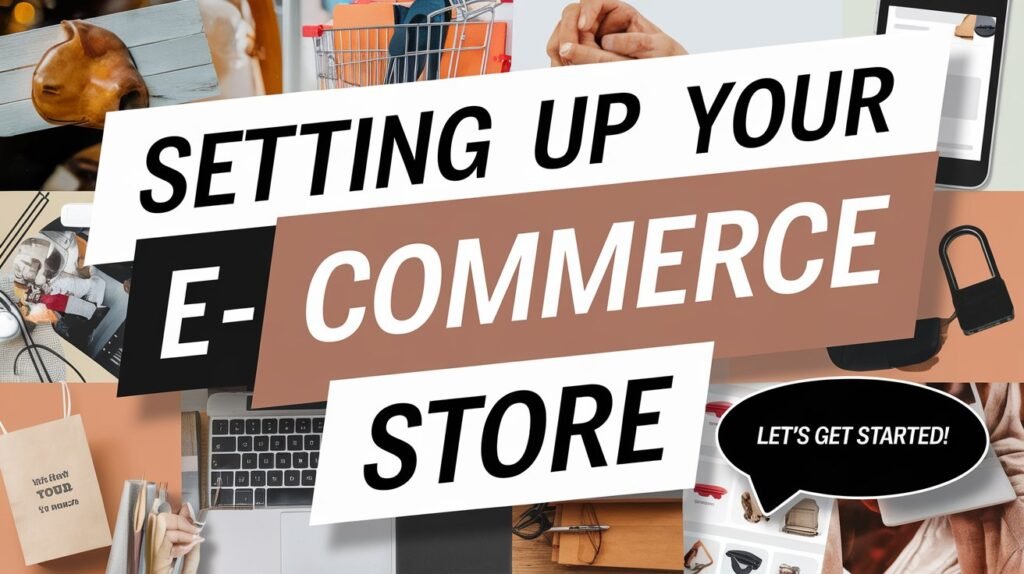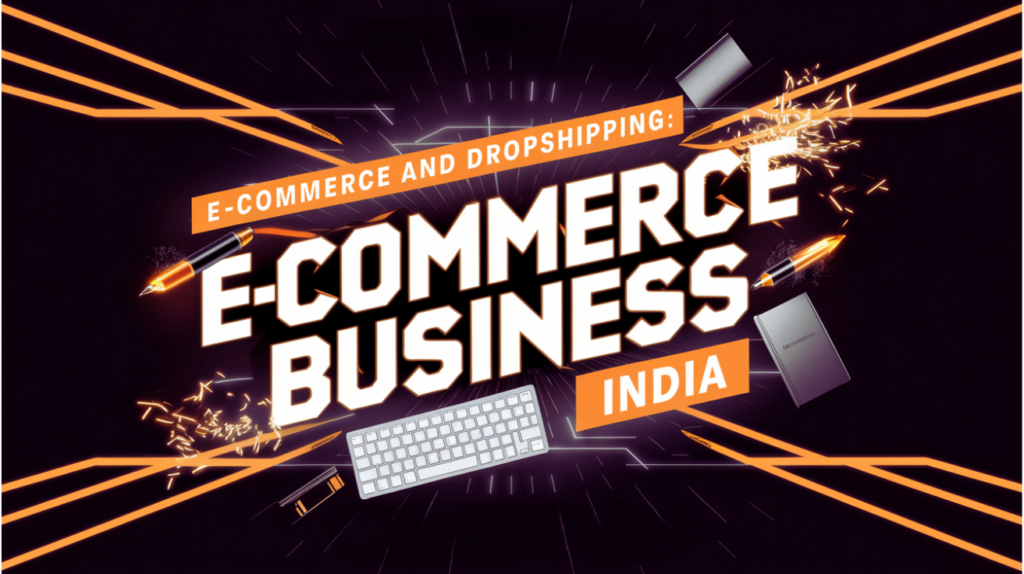E-Commerce and Dropshipping: Selling Without Inventory
Aspiring entrepreneurs are frequently hampered in today’s fast-paced digital world by their concern of managing physical stock and making significant upfront investments. However, for people who want to launch a business without the trouble of keeping a warehouse or worrying about unsold goods, e-commerce and dropshipping selling without inventory offer a special opportunity. You can start an online store, buy products straight from suppliers, and only pay when an order is placed by using the dropshipping model. This allows you to concentrate on marketing and customer support.
Understanding E-Commerce And Dropshiping Business
Knowledge of E-Commerce Online purchasing and selling of goods and services is known as e-commerce. It has revolutionized corporate operations and facilitated entrepreneurs’ access to a worldwide audience. E-commerce can be in many different forms, such as:
- Business to Consumer (B2C): The most common type, where businesses sell directly to consumers (e.g., Amazon, Walmart).
- Business to Business (B2B): Transactions between businesses (e.g., wholesalers selling to retailers).
- Consumer to Consumer (C2C): Platforms that enable consumers to sell to other consumers (e.g., eBay, Etsy).
- Consumer to Business (C2B): Individuals selling their products or services to businesses (e.g., freelancers offering services
Knowing these models will enable you to choose the optimal strategy for your web business.
What is Dropshipping?
Dropshipping is a retail fulfillment strategy in which a retailer does not maintain inventory of the goods it sells. Instead, when you sell a product, you buy it from a manufacturer or supplier who then sends it straight to the buyer. This implies that you never keep inventory or touch the product directly.
Advantages of Dropshipping

Dropshipping is a retail fulfilment strategy in which a retailer does not maintain an inventory of its goods. Rather, when a store sells a good, it buys it from a third party (often a manufacturer or wholesaler) and ships it straight to the buyer. The following are the main benefits of drop shipping:
Low Startup Costs: The initial expenses of launching a dropshipping business are comparatively low because there is no requirement to make an upfront inventory investment. Products are only paid for after a sale is made.
Decreased Risk: By eliminating the need to keep inventory, you can lower your chance of losing money by avoiding buying unsold goods.
Low Overhead: Dropshipping enables you to operate your business with less operational complexity, which lowers your overhead costs and eliminates the need for warehouse and inventory management.
Large Product Selection: You can provide a far greater variety of goods for sale because you are not buying anything in advance. You can put the product up for sale in your store if a supplier has it in stock.
Scalability: More work is needed in traditional retail, especially when it comes to inventory management, as orders increase. Dropshipping, on the other hand, makes it easier to grow without having to worry about logistics like inventory, packing, or shipping.
Location Independence: As long as you have an online connection, you may operate a dropshipping business from almost anywhere because your store does not need a physical inventory.
Product Testing Made Simple: Dropshipping allows business owners to test new items more easily without having to commit to large purchases, which speeds up the process of identifying lucrative markets or trends.
Lack of goods Management: Managing, handling, and keeping track of goods can be expensive and complicated. Dropshipping removes the requirement for inventory management and the concern over shortages or surplus.
Disadvantages of Dropshipping:
Although dropshipping has many benefits, there are a few drawbacks that business owners should be aware of:
Reduced Profit Margins: Dropshipping typically results in reduced profit margins because it entails purchasing from vendors that manage inventory and shipping. Prices are frequently driven down by intense competition, and you might need to sell a lot of goods to make a sizable profit.
Lack of Inventory Control: You have little to no control over inventory management because you are depending on outside vendors. Customers may become irate and your reputation may suffer if this results in circumstances where things are backordered or out of stock.
Shipment Difficulties: Managing shipment can get challenging if you are obtaining goods from several vendors. It might be difficult to provide your consumers with consistent shipping costs and timelines when different suppliers employ different delivery techniques or charge different rates.
Supplier Errors: When dealing with suppliers, errors may occur, such as incorrect items being dispatched, orders being delayed, or inadequate packaging. Even though the mistake was not yours, you will regrettably be the one responsible for resolving these concerns with clients.
Lack of Branding Control: It is challenging to design a distinctive unboxing experience or incorporate branding components like personalized touches, inserts, or bespoke packaging when you are not in charge of the fulfilment process. This hinders the development of a powerful brand identity.
High Competition: Dropshipping is a very competitive business strategy because of the low entrance barrier. It might be difficult to separate from the competition and win over customers when so many companies are selling the same goods as you.
Dependency on Suppliers: The dependability of your suppliers is critical to the success of your company. Though you have little influence over those factors, your firm is directly impacted if they have supply problems, shipment delays, or quality difficulties.
Limited Control Over Customer Experience: When you dropship, you depend on your suppliers to complete orders, which may have an impact on customer satisfaction, package quality, and shipping timeframes. Your brand is the one that suffers if something goes wrong.
Complexity of Returns and Refunds: Dropshipping can make handling returns and refunds challenging. Returns frequently need liaising with suppliers because you are not the one managing the inventory, which can cause delays and additional expenses.
Difficulty in Establishing Strong Customer Relationships: It may be more difficult to establish a personal connection with your consumers if you are not personally involved in fulfilment. Since you frequently sell the same goods as many other companies, it becomes more challenging to build client loyalty and trust.
Setting Up Your E-Commerce Store

One profitable strategy for selling goods or services online is to open an online store. Here’s a detailed guide to get you going:
1. Choose Your Niche and Products
- Find Your Niche: Decide on a particular field or market niche that you are enthusiastic about or that has a high level of demand. It is easier to target a certain audience if your specialty is more narrowly defined.
- Choose Products: Select goods that fit your target market and speciality. You can sell services, digital items, or tangible commodities. Investigate your rivals and find out what the market wants.
2. Decide on Your Business Model
- Dropshipping: Products are sent straight from suppliers to clients; no inventory is kept on hand.
- Wholesale/Retail: You purchase goods in large quantities, keep them in storage, and ship them to clients as orders are received.
- Print-on-Demand: After a consumer places an order, custom items (such as T-shirts and mugs) are printed and dispatched.
- Subscription Box: You offer a subscription service with recurrent deliveries of carefully chosen goods.
3. Choose an E-Commerce Platform
- Shopify: An easy-to-use platform with a large selection of themes and apps.
- For WordPress users, WooCommerce is a customisable solution.
- BigCommerce: A platform that can grow with your company.
- Squarespace: Excellent for portfolios and small enterprises. Select a platform based on your business requirements and technical proficiency. The majority of solutions provide inventory management, templates, and simple payment integration.
4. Register a Domain Name
5. Design Your Website
- Select a Theme or Template: The majority of e-commerce platforms have themes that can be customized. Select one that complements your brand and facilitates customer navigation.
- Branding: To create a unified and polished appearance, use your logo, brand colors, and typefaces.
- User-Friendly Design: Make sure your store has an intuitive layout, easily accessible menus, and a straightforward checkout procedure.
- Mobile Optimization: Since many clients shop on their phones, make sure your website is responsive.
6. Add Product Listings
- Product Descriptions: Give each product a thorough, understandable description. Emphasize the features, advantages, and details.
- High-quality Images: To showcase your products, use well-taken product images taken from various perspectives.
- Pricing: Establish competitive rates that cover expenses and guarantee a profit margin while accurately representing the worth of your goods.
7. Set Up Payment and Shipping
- Payment Gateway: Enable secure payment methods like credit cards, PayPal, Stripe, or Apple Pay. Your platform will guide you through setting up these options.
- Shipping Options: Decide how you’ll handle shipping—whether offering free shipping, flat-rate, or real-time carrier rates. If you’re dropshipping, this is handled by your suppliers.
8. Set Up Legal Pages
- Privacy Policy: Explain how you collect, store, and use customer data.
- Terms and Conditions: Outline the rules for using your site, purchasing products, and delivery terms.
- Return Policy: Clearly state your return and refund policies to set customer expectations.
9. Test Your Store
Examine every step of the consumer journey, from product browsing to checkout and payment, prior to launch. To guarantee a seamless, reliable experience, test various gadgets and web browsers.
10. Launch Your Store
Go online as soon as everything is ready! Notify your existing audience, email your list, and post an announcement about your store on social media.
11. Market Your Store
- Search Engine Optimization (SEO): Use pertinent keywords to improve your website and raise your store’s ranking on Google and other search engines.
- Social media marketing: Promote your goods and interact with your audience by using sites like Facebook, Instagram, and Pinterest.
- Paid Advertising: To increase visitors to your store, spend money on Google Ads, Facebook Ads, and other paid marketing strategies.
- Email marketing: Create an email list to send prospective clients updates, newsletters, and special offers.
12. Analyze and Improve
Take into account the following tactics to expand your dropshipping business as your store expands:
- Increase the Variety of Your Products: Launch new items in response to consumer demands and industry developments.
- Optimize Your Operations: Use solutions like Zapier to automate repetitive operations and streamline your order fulfillment process.
Invest in Paid Advertising: To expand your audience and boost sales, set aside money for paid advertising (such as Google Ads and Facebook Ads).
Conclusion
Dropshipping and e-commerce present exciting chances to establish a successful online business without having to worry about inventory control. You can successfully traverse the e-commerce marketplace and reach your financial objectives by adhering to the procedures described in this chapter and consistently modifying your strategy. As you go out on this adventure, keep in mind that the secret to being an expert at internet selling is perseverance and flexibility.
Frequently Asked Questions (FAQs)
1. How does content quality impact SEO rankings?
Content quality influences how users interact with your site (bounce rate, dwell time), which sends positive or negative signals to search engines about your content’s relevance and value.
2. What role do keywords play in content optimization?
Keywords help search engines understand the topic of your content, but they need to be used naturally, without stuffing, to maintain both SEO value and readability.
3. How often should I update my website content for SEO?
Regularly updating content helps maintain its relevance, improves freshness scores, and keeps users engaged, all of which can positively affect rankings.
4. Does long-form content perform better for SEO?
Long-form content tends to rank higher for competitive keywords because it provides comprehensive information, which keeps users on the page longer and satisfies search intent.





Pingback: Recent Problems I Can Solve In Business
Pingback: How to Make Passive Income in 2025 – Site Title